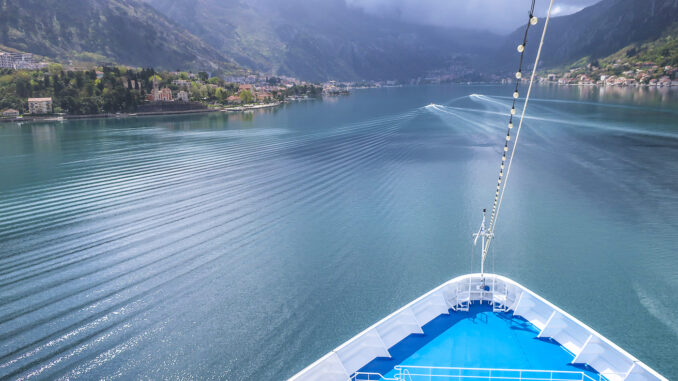
The two-hour sail up a deep canyon to get to Kotor, Montenegro’s ancient port, is so spectacular everyone on Oceania Cruises’s Insignia was on deck to see it.
The bells of churches reverberate between sheer cliffs on both sides of the ship and the scene is framed by dramatic mountain peaks beyond them, And the show is just beginning.
Just as it looks as though we’re about to plow into a cliff, Insignia–which is in the middle of an epic round the world in 180-days voyage– makes a sweeping left turn through a narrow gorge. A scenic bay and the funky stone fortress that’s Kotor finally comes into view.
Kotor is coming into its own as a cruise destination. There are a lot of reasons why it’s a city to see on your next cruise. 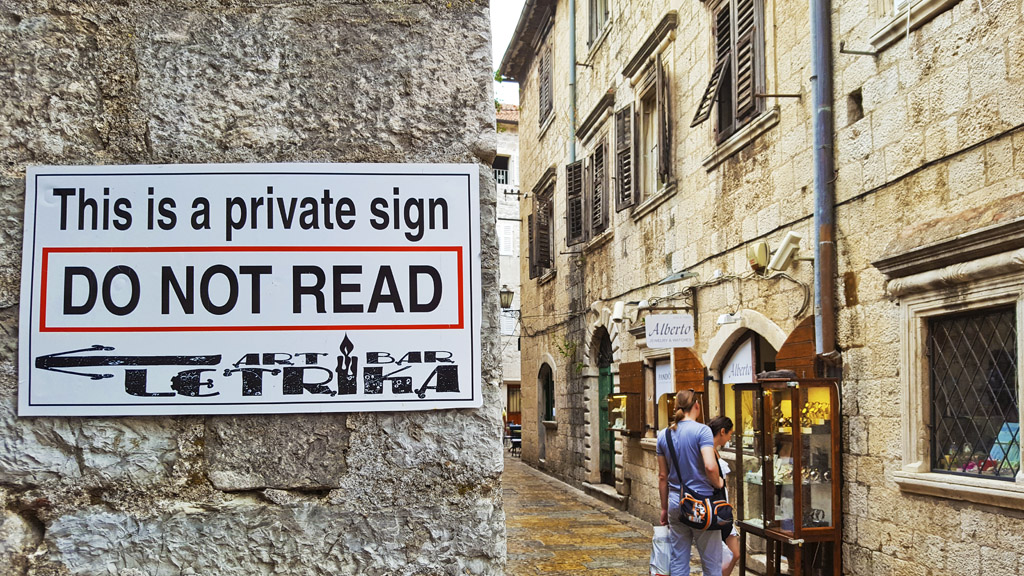
And they have a sense of humor–Photo by Wallace Immen
1) It’s the real deal
Kotor has got millennia of history with more players than a video Game of Empires. It starts with the Illyrians, then the Romans, Ostrogoths, Saracens, Byzantines and Dalmatians to name a few who claimed sovereignty over this strategic mountainous redoubt. It’s been sometimes independent, as it is today, but just as often a suzerain dependency or part of the Serbian or Venetian empires. No wonder its ancient stone walls were built as much as 40 feet thick.
The city has been compared to a mini-Dubrovnik and there are a lot of historical similarities. The gated city became a stronghold Venetian traders built between the twelfth and fourteenth century. Its intact architecture from the Middle Ages and a catalog of ancient churches have made it a UNESCO World Heritage site.
But a visit here is very different from a day in the nearby and well-known Dubrovnik, which sees thousands of tourists a day. Kotor often only welcomes one small cruise ship a day. Insignia carries just 696 guests and not all of us are ashore in town at once. That makes the old town uncrowded enough that you can ramble ancient streets and imagine what it might have been like to live here during the Crusades.
If it seems that all the shops and restaurants in the old quarters are aimed at tourists, you’re right. The population of Kotor is about 13,000 but only 3,000 of them actually live inside the walls.

2) Run the maze inside the dramatic medieval walls
We learn in a port briefing on Insignia that the city became important and rich because it was so secure. The 17-mile long gorge that leads to the city from the Adriatic Sea is not a fjord, which is a valley gouged out by glaciers. It’s actually a natural gap between some extremely steep mountains.
That gave Kotor a formidable strategic advantage because at the dramatic bend in the valley, the opening is extremely narrow. In Venetian times, strong chains were strung from one side of the bay to the other as a barrier. Ships could only get in if they had official permission and the chains were then lowered to let them pass.
By land, the towering mountains were an equally daunting barrier. Remarkably, it was still essential to build a great wall of thick stone almost to the peak of the mountain to keep marauders from attaching the fortified city from above. At night, when the wall is lit up, it appears like a sparkling necklace hanging on the mountain.
There are only three gates through Kotor’s massive stone walls. The man Sea Gate is only a five-minute walk from the cruise dock. Above its arch, a carved lion gave notice that this was a city under the control of Venice. The lion was removed in the 1940s when Montenegro was lumped in the confection that was Yugoslavia. Now that Montenegro has its independence back, the restored lion is installed on a wall around the corner from the gate in honor of its history.
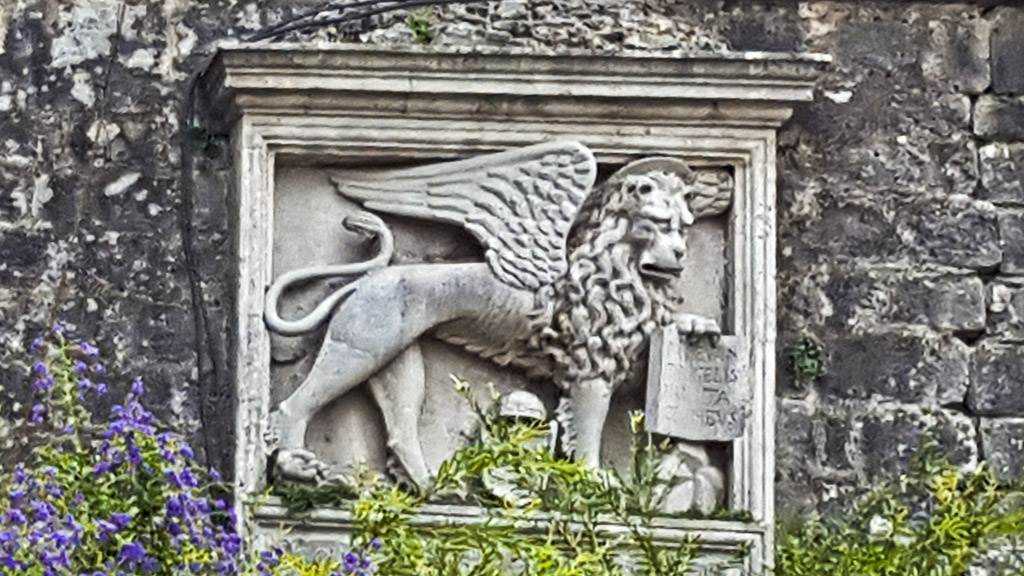
Just inside Kotor’s main gate is the Square of Arms, that gets its name from the munitions factories and Arsenal that were busy here in Venetian times. Around the square are solid stone buildings including a former theater that became the city hall and a tower whose still accurate clock dates to the sixteenth century.
In another square is the twin-towered Cathedral of St Tryphon that dates to 1166. If there isn’t a service going on, you can pay a 3 Euro admission which is well worth it to see the church’s upper floor museum including elaborate frescoes, vestments, gold work and relics including a silver case said to contain the relics of St. Tryphon, who’s venerated in the Orthodox Catholic calendar as the saint of fertility and farming.
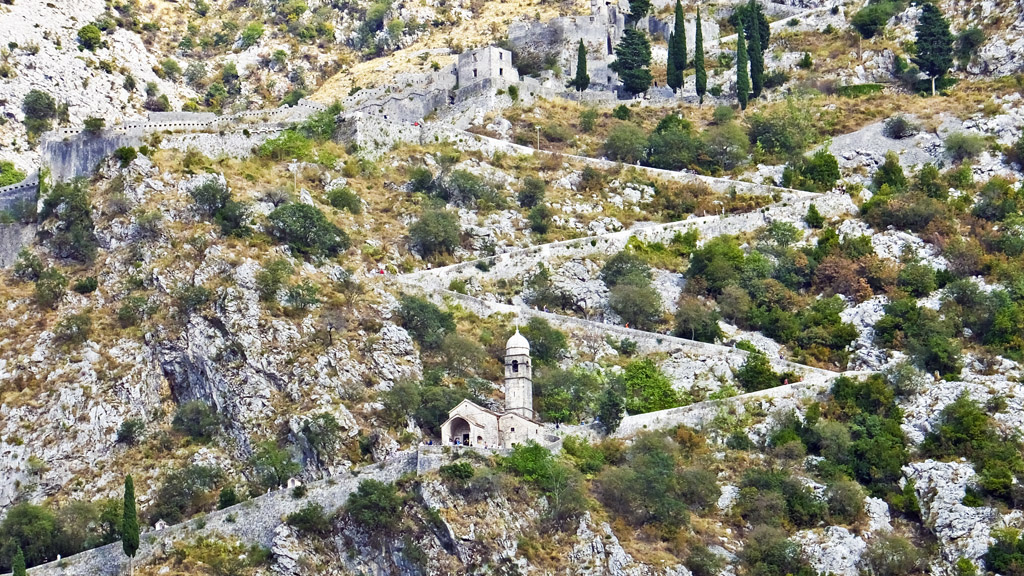
3) Make like a mountain goat
Up for a challenge? Try trekking up the 1,400 zig-zagging steps to the San Giovanni fortress at the top of the mountain. Even on a cool day, it’s a test of endurance.
Most climbers decide to turn back about a third of the way up the mountain at the fifteenth century Church of Our Lady of Remedy. A visit to the church was supposed to be a cure for the plague, although it’s possible only those who were healthy enough to recover were ever actually able to make the ascent to pray at the church.
If you’re less adventurous, you can still walk around the top of the walls that surround the town. The views of the harbor and mountains are spectacular on a clear day.
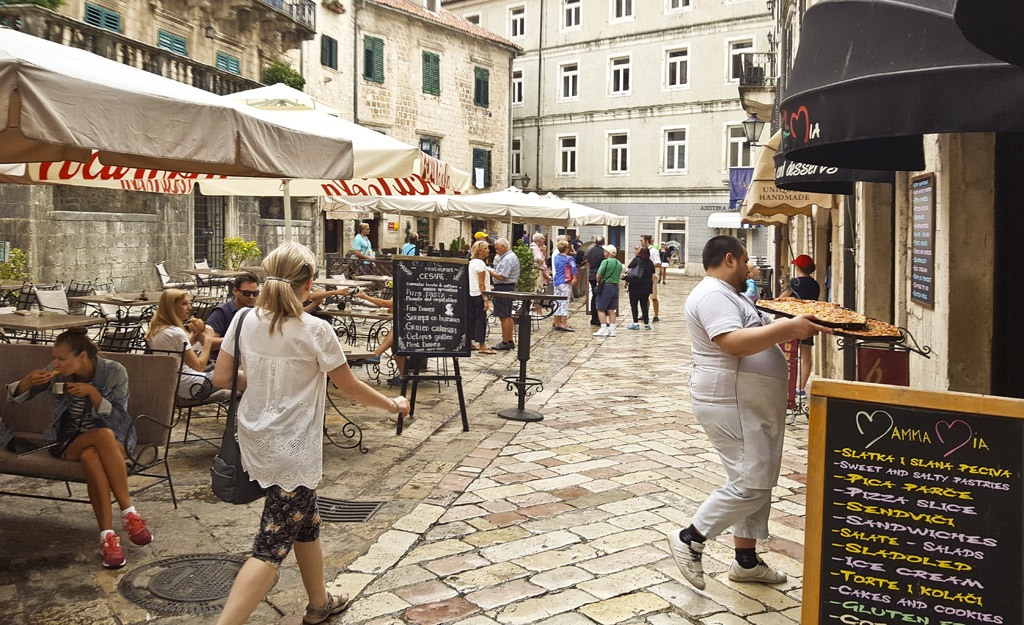
4) Search for Montenegro’s cuisine
Looking at the menus of the tourist restaurants around the main Square of Arms, you might believe that the local specialties are pizza and Tex-Mex burgers. But don’t despair, because you can still find lots of restaurants in other parts of the city that cook traditional foods in the traditional way: over wood fires.
The fishing fleet, as well as local fish farms, bring in catches of tasty bass and sea bream by mid-morning and they’re on the menus by lunch time. The Venetian heritage of the city shows up in bread topped with tomato, onion and olive oil, similar to bruschetta, as well as dishes like scampi and calamari. Another local specialty is Kuvani Brav, a lamb stew cooked with vegetables.
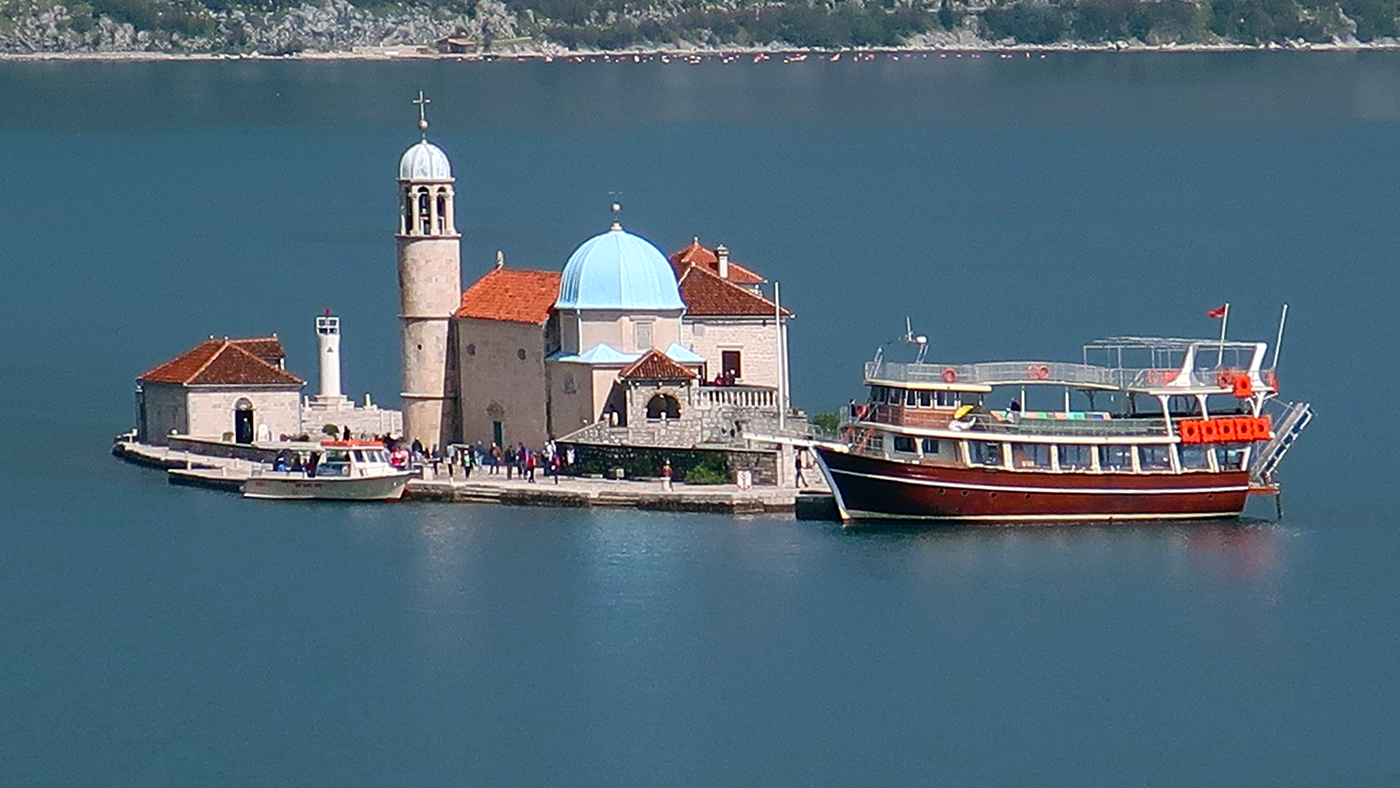
5) Drop in on the Church on the Rocks
The legend has it that in the fifteenth century, fishermen had a vision of the Virgin Mary and baby Jesus hovering above a reef in the harbor. They started a ritual of dropping a stone for safe travel at the spot every time they headed out. Eventually, locals were hauling in loads of boulders and a few sunken ships were added. Miracolo! The pile became an artificial island.
By the seventeenth century patrons who believed in the legend and its supposed ability to bring good fortune built a domed chapel named Our Lady of the Rocks. Donations included paintings by Baroque masters and a fortune in silver and gold decorations that make a boat ride out to the island worth the price.
The custom of tossing rocks in the water is alive today and the island is still growing. Every year at sunset on July 22, there’s an event called fasinada, where a flotilla of local boats head out to drop more piles of stone around the island.
It’s back to Insignia, where the chefs have brought in a good supply of delicious fresh local fish on ice to prepare for dinner.
Short or long, a visit to Kotor is a day you won’t forget.




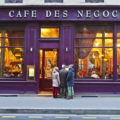
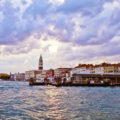
1 Trackback / Pingback
Comments are closed.